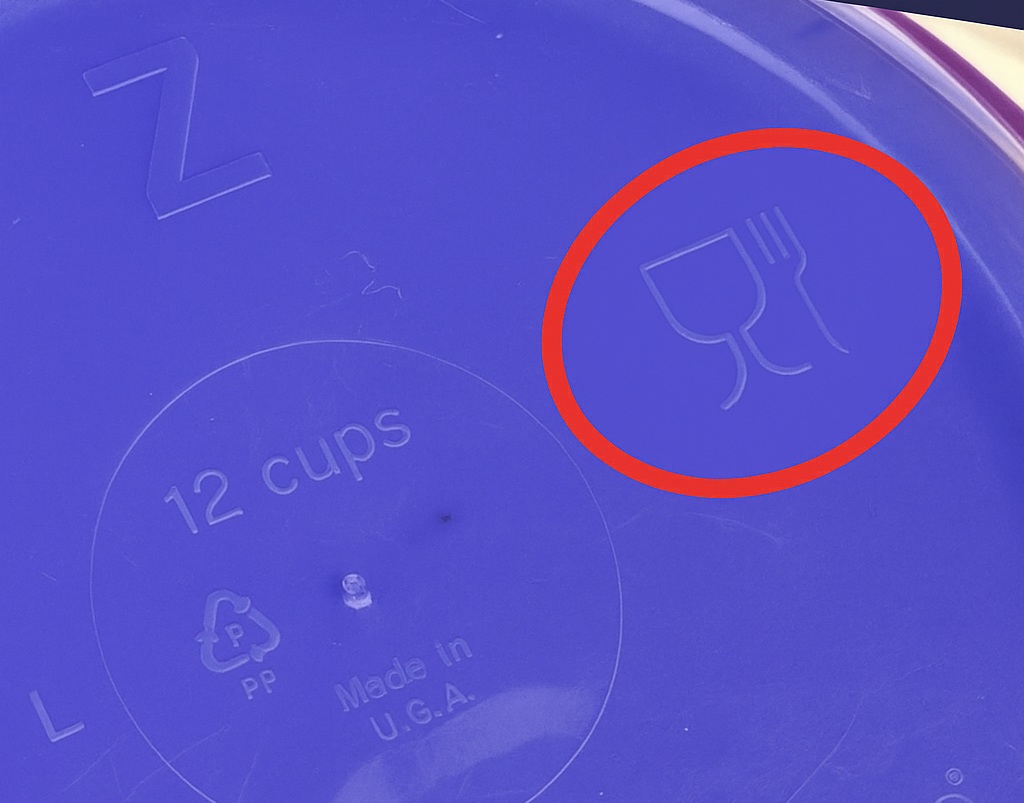Have you ever flipped over a Tupperware lid and noticed a small icon of a fork and cup etched into the plastic? You might have wondered what it’s trying to tell you. It’s not a secret logo or a random design — it’s actually one of the most important symbols on your kitchenware.
Let’s decode it.

The Fork and Cup Icon Explained
That tiny image of a fork and wine glass means the product is safe for food contact. In other words, the material used to make the container has been tested and approved for storing food and beverages. It won’t release harmful chemicals or toxins into your meals.
This symbol is used internationally, especially under European and U.S. food safety regulations. If you see it, it’s an official assurance that the container is suitable for holding anything edible — from soup to salad to your morning smoothie.
If you don’t see the fork and cup symbol on a plastic container, it doesn’t automatically mean it’s unsafe, but it might not be designed for long-term food contact. In that case, it’s better to use it for non-food storage — like buttons, craft supplies, or tools — rather than something you plan to eat or drink.

Why the Symbol Matters
Plastic safety is a serious topic. Over the years, people have become more aware of chemical leaching — when certain plastics release substances into food, especially when heated or frozen.
The fork and cup symbol tells you the plastic has passed strict tests showing it’s stable and non-reactive with food under normal use. It won’t alter taste, smell, or safety. That’s why you’ll find it not just on Tupperware, but also on reusable water bottles, lunch boxes, and even kitchen utensils.
In short, if your container carries this mark, you can confidently use it to store leftovers, pack lunches, or meal prep without worrying about contamination.
Other Symbols You Might See

Tupperware and other food-storage brands often include a few more helpful icons next to the fork and cup. Here’s what they mean:
- Three wavy lines: Microwave-safe — the container can handle gentle reheating.
- Snowflake: Freezer-safe — it won’t crack or get brittle in low temperatures.
- Dish with water drops or lines: Dishwasher-safe — safe to wash on the top rack.
- Triangle with a number inside (♻️): The recycling code that identifies the type of plastic, like “5” for polypropylene, which is one of the safest for food use.
These small icons together give you a quick visual guide to how the product can be used safely and how to dispose of it responsibly when it’s time to recycle.
How to Keep Your Tupperware Safe and Lasting Longer
Even if your Tupperware is food-safe, it still needs proper care:
- Avoid using metal utensils that can scratch the surface — scratches can harbor bacteria.
- Don’t cook or bake in it, even if it’s microwave-safe; it’s meant for reheating only.
- Let hot foods cool slightly before sealing them to prevent warping.
- Hand wash when possible — or stick to the top rack if you’re using a dishwasher.
- Replace containers that show signs of damage, discoloration, or odor retention.
Proper use not only protects your food but also extends the life of your containers.

The Bottom Line
That small fork and cup symbol on your Tupperware isn’t something to overlook — it’s your guarantee of food safety. It tells you the container is made with materials that meet strict health standards and can safely come into contact with your meals.
So next time you’re organizing your kitchen or packing leftovers, take a quick look under your container. If you see that fork and cup mark, you can rest easy knowing it’s been designed to safely store what matters most — your food and your family’s health.